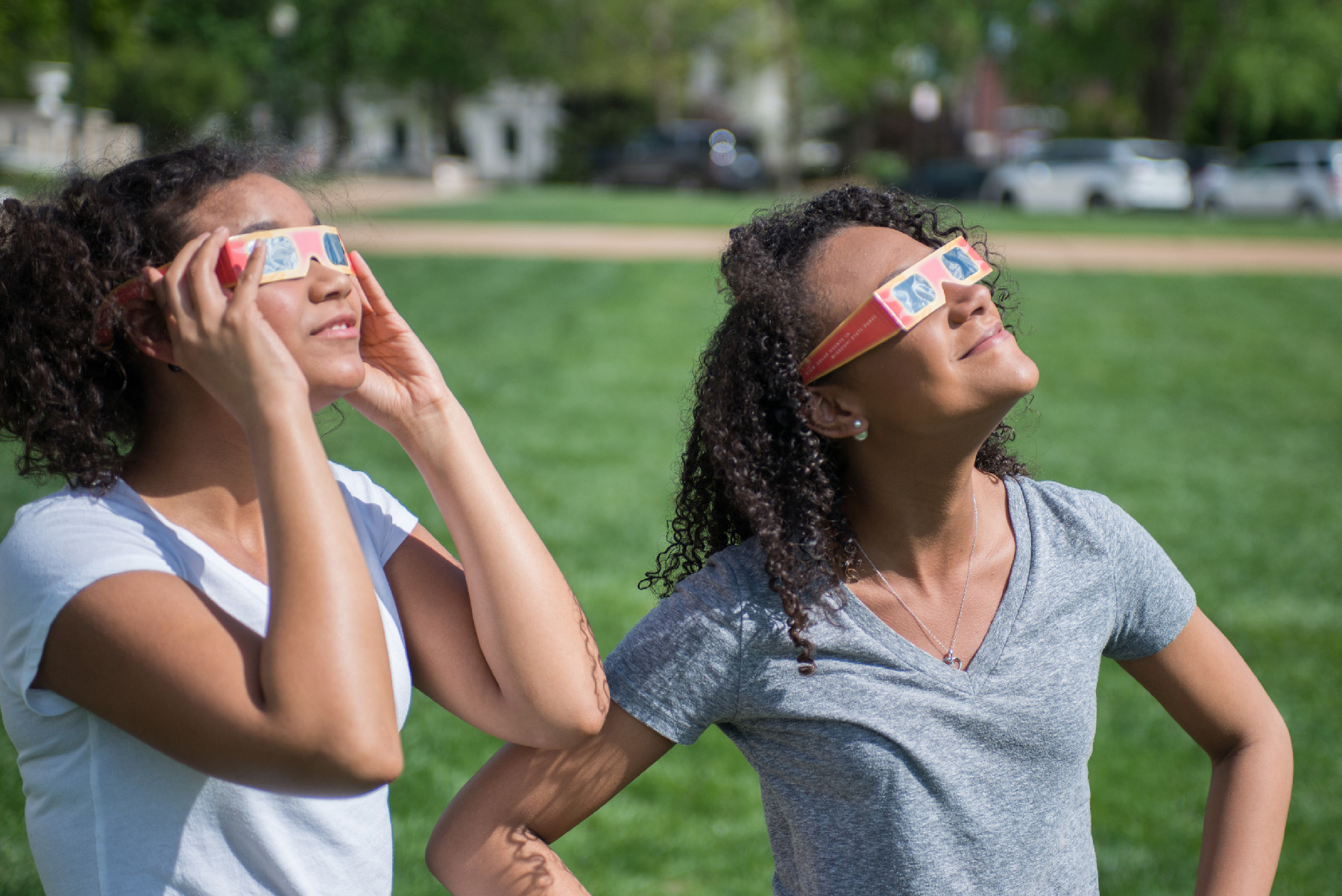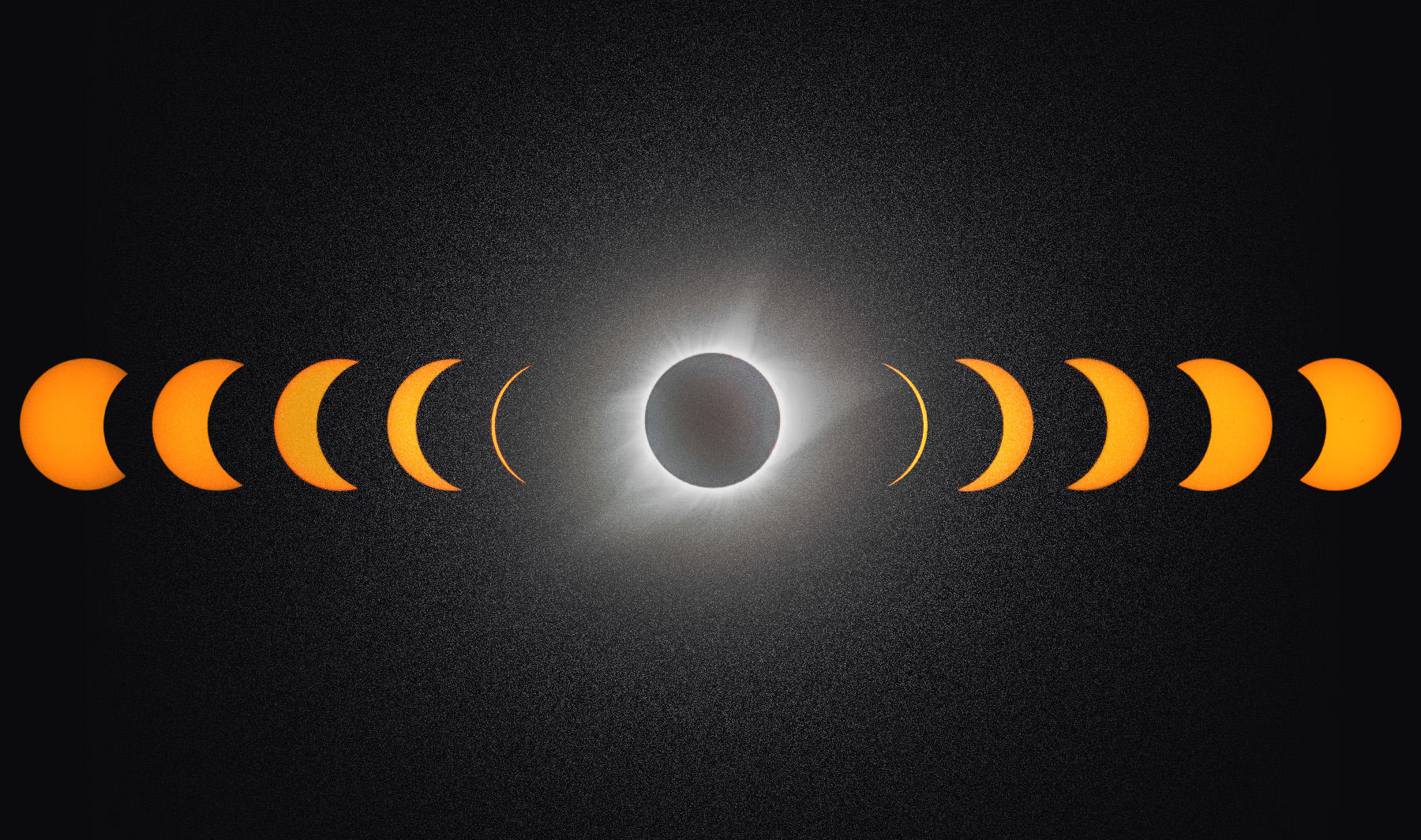A composite view of the 2017 eclipse shows the progression as the moon moves over the sun until totality, followed by it’s exit as the eclipse concludes. During totality, it is possible to see the corona, which is the outer layer of the sun’s atmosphere. The corona is made of hot plasma and extends millions of kilometers into space.
MoDNR photo by Andrew Richmond
Published by
on

Mark your calendars for April 8, 2024, when an exciting and rare astronomical event, a total solar eclipse, will occur!
The last total solar eclipse in the United States took place on Aug. 21, 2017, and the 2024 eclipse will last almost double the time experienced in 2017. Viewers can expect a little more than four minutes of totality if viewing from the best locations.
A total solar eclipse happens when the moon passes between the earth and the sun, casting a shadow on viewers on the ground. You can witness the moon’s silhouette gradually move into place if you use special eclipse-viewing glasses to protect your eyes. Once the sun is completely blocked out, the glasses can come off and you will experience darkness during daylight hours. This is one time you might want to be left out in the dark!
In the United States, totality will begin in Texas at 1:27 p.m. CDT, as the shadow cast by the moon travels across the country, and will end in Maine at 3:35 p.m. EDT. While most of Missouri will experience at least a partial solar eclipse, only the southeastern part of the state will experience totality. Check the map for more information on which of Missouri’s parks and historic sites will experience a blackout.

If you haven’t seen a total solar eclipse, put it on your bucket list. And don’t forget, you can make your reservations at our campgrounds a year in advance, so start planning! To make camping reservations at Missouri state parks and plan your celestial adventure, visit icampmo1.usedirect.com/MSPWeb/.






